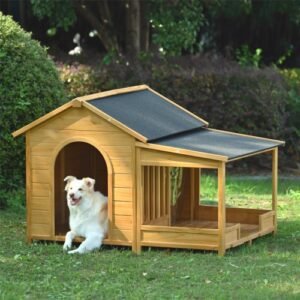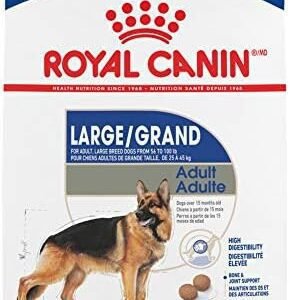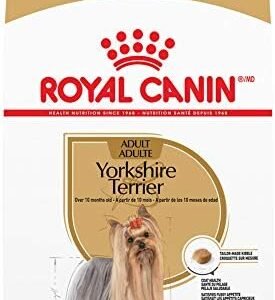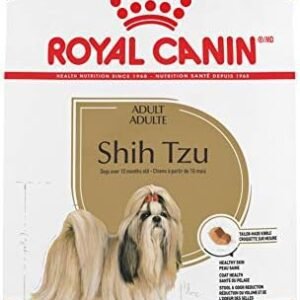In the realm of canine companionship, the Australian Retriever emerges as a fascinating and distinctive breed, capturing the hearts of dog enthusiasts. Picture this: a dog that embodies intelligence, versatility, and an affectionate nature. In this section, we will delve into the unique qualities of the Australian Retriever, exploring why it stands out and how it could be an ideal addition to various lifestyles.
Table: Australian Retriever Breed Overview
| Field | Information |
|---|---|
| Height | 19 to 23 inches |
| Weight | 30 to 60 pounds |
| Life Span | 12 and 15 years |
| Good with | Family |
| Temperament | Intelligent, Affectionate |
| Intelligence | High |
| Shedding Amount | Moderate |
| Grooming | Moderate |
| Exercise Needs | Regular Exercise |
| Energy Level | Moderate to High |
| Barking Level | Moderate |
| Drool Amount | Low |
| Coat Length/Texture | Medium, Dense |
| Colors | Various |
| Patterns | Not Known |
Table of Contents
Breed History and Origin:

Exploring Their Roots:
The Australian Retriever’s history is intricately woven with the lineage of its parent breeds, the Australian Shepherd and the Retriever. Understanding the historical development of this crossbreed provides insights into its unique combination of traits and characteristics.
- Australian Shepherd Heritage:
- The Australian Shepherd, despite its name, did not originate in Australia. Instead, it has roots in the Basque region of the Pyrenees Mountains. These dogs accompanied Basque shepherds who emigrated to the United States, where they became known for their herding skills.
- The breed gained popularity in the American West, particularly among ranchers and farmers. Renowned for their intelligence and agility, Australian Shepherds became valued working dogs in various capacities, including herding livestock.
- Retriever Legacy:
- Retrievers, on the other hand, have a rich history associated with waterfowl hunting. Breeds like the Labrador Retriever and Golden Retriever were developed in the 19th century in the United Kingdom. Their retrieving instincts, gentle temperament, and love for water made them excellent companions for hunters.
- Retrievers quickly found favor not only for their hunting prowess but also for their friendly disposition, leading to their popularity as family pets.
- The Crossbreeding Initiative:
- The intentional pairing of the Australian Shepherd and the Retriever aimed to merge the intelligence of the former with the retrieving instincts of the latter. This strategic combination sought to create a versatile and affectionate companion with a strong work ethic.
Notable Traits:
The Australian Retriever inherits a set of notable traits from both parent breeds, contributing to its unique identity in the realm of canine companionship.
- Intelligence and Work Ethic:
- The Australian Shepherd’s intelligence is a prominent trait passed down to the Australian Retriever. This cognitive prowess, coupled with the Retriever’s work ethic, results in a breed that excels in various activities and tasks.
- Versatility in Roles:
- Both the Australian Shepherd and the Retriever are known for their versatility. The former’s herding background and the latter’s retrieving skills create a blend that adapts well to different roles, whether as a family pet, a working dog, or a participant in canine sports.
- Affectionate and Social Nature:
- The affectionate and social nature of Retrievers is a cornerstone of the Australian Retriever’s temperament. These dogs form strong bonds with their families, enjoying both human and animal companionship.
Relevance of Origin:
The Australian Retriever’s origin plays a crucial role in shaping its characteristics and behavior. Understanding how its roots have influenced the breed provides valuable insights for prospective owners.
- Herding and Working Heritage:
- The herding heritage of the Australian Shepherd contributes to the breed’s agility and alertness. This background may manifest in their inclination to be vigilant and responsive to their surroundings.
- The Retriever’s working legacy infuses a sense of purpose and a strong work ethic into the Australian Retriever. Whether engaged in play or more structured activities, these dogs often thrive when given a task.
- Adaptability and Socialization:
- The Australian Retriever’s roots in both herding and retrieving make it adaptable to various environments. Their ability to socialize with people and other pets stems from the friendly and cooperative nature ingrained in both parent breeds.
- This adaptability extends to living conditions, making the Australian Retriever well-suited for families, individuals, or even those with active lifestyles requiring a canine companion.
- Work and Play Balance:
- The blend of herding and retrieving traits emphasizes the importance of a balanced approach to work and play. While they may excel in activities that stimulate their minds and bodies, they also thrive on companionship and recreational interactions.
In summary, the Australian Retriever’s history and origin provide a rich tapestry of herding and retrieving traditions, resulting in a breed that embodies intelligence, versatility, and an affectionate nature. The intentional combination of the Australian Shepherd and Retriever has given rise to a dog that seamlessly integrates into various roles and environments, making it a delightful addition to households seeking a dynamic and loving companion.
Understanding the Australian Retriever Breed’s Traits:

Physical Characteristics:
The Australian Retriever exhibits a set of distinctive physical characteristics that contribute to its overall charm and appeal. Understanding these traits provides valuable insights for potential owners:
- Size:
- While specific height and weight details are not known for the Australian Retriever, the breed typically falls within the medium to large size range. This size is influenced by the traits inherited from both parent breeds, the Australian Shepherd and the Retriever.
- Coat Type and Color:
- The Australian Retriever’s coat is medium in length and dense. This requires moderate grooming to keep it healthy and free of mats. The coat colors of the Australian Retriever can vary widely, adding to the breed’s individuality. Expect a range of coat colors, possibly influenced by the Australian Shepherd’s diverse color palette.
- Distinguishing Features:
- The breed boasts a well-balanced physique that reflects the athleticism of the Australian Shepherd and the sturdy build of a Retriever. This balanced structure contributes to the Australian Retriever’s agility and versatility in various activities.
Temperament Overview:
Understanding the temperament of the Australian Retriever is crucial for prospective owners, especially those considering the breed as a family pet. Here’s an overview of the breed’s temperament:
- Affectionate Nature:
- The Australian Retriever is known for its affectionate nature, forming strong bonds with its family members. This makes them excellent companions for individuals and families seeking a loving and devoted pet.
- Intelligence and Trainability:
- With a high level of intelligence inherited from the Australian Shepherd, the Australian Retriever is a trainable breed. They thrive on mental stimulation, making them well-suited for activities that engage their minds. Basic obedience training and interactive games are effective in keeping them mentally sharp.
- Compatibility with Children:
- Australian Retrievers generally display a friendly and tolerant attitude towards children. Their affectionate nature makes them suitable for families with kids. However, as with any dog breed, supervision and proper introductions are essential to ensure a positive interaction between the dog and children.
- Compatibility with Other Pets:
- The breed’s social nature extends to other pets, and Australian Retrievers often get along well with other animals in the household. Early socialization and gradual introductions contribute to fostering positive relationships between the Australian Retriever and other pets.
Environment Needs:
Understanding the specific environmental needs of the Australian Retriever is essential to ensure their well-being and happiness. Here are key considerations:
- Living Space:
- Australian Retrievers, with their moderate to high energy levels, thrive in homes with sufficient space. While they can adapt to apartment living with regular exercise, having access to a yard or engaging in regular outdoor activities is beneficial for their overall health.
- Temperature Sensitivity:
- While the Australian Retriever’s coat provides some protection against varying temperatures, it’s essential to consider their comfort, especially in extreme weather conditions. Adequate shelter and precautions in hot or cold climates help ensure their well-being.
- Social Interaction:
- The breed enjoys social interactions, both with family members and other pets. Adequate playtime and socialization contribute to a well-adjusted and happy Australian Retriever. Loneliness or lack of interaction can lead to boredom, potentially resulting in undesirable behaviors.
Common Behavioral Traits:

Exploring the common behavioral traits associated with the Australian Retriever provides insights for owners, helping them understand and address both positive and challenging aspects of the breed:
- Playfulness and Enthusiasm:
- The Australian Retriever often exhibits playfulness and enthusiasm, making them enjoyable companions for families. Regular play sessions, interactive toys, and engaging activities are essential for channeling their energy in positive ways.
- Adaptability:
- With a versatile heritage, the Australian Retriever adapts well to different environments. This adaptability makes them suitable for various lifestyles and living situations. However, routine and consistency in their daily activities contribute to their overall well-being.
- Potential Challenges:
- Like any breed, the Australian Retriever may exhibit certain challenges, such as a need for mental stimulation and physical exercise. Without proper outlets, they may resort to undesirable behaviors like excessive barking or digging. Consistent training, socialization, and providing stimulating activities are essential in managing potential challenges.
- Separation Anxiety:
- Due to their affectionate nature and strong bonds with their families, Australian Retrievers may be prone to separation anxiety if left alone for extended periods. Gradual training to acclimate them to alone time, along with providing interactive toys, can help mitigate this issue.
Popularity and Recognition:

Current Popularity:
Understanding the current popularity of the Australian Retriever sheds light on trends in ownership and the breed’s overall appeal.
- Family-Friendly Appeal:
- The Australian Retriever has gained considerable popularity among families seeking a dog that combines intelligence with a loving nature. Their adaptability and moderate size make them suitable for a range of households, from spacious suburban homes to more compact urban apartments.
- Social Media Presence:
- Social media platforms have played a significant role in amplifying the breed’s visibility. Owners share their experiences, showcasing the charm and unique qualities of Australian Retrievers. Engaging content on platforms like Instagram, Facebook, and TikTok contributes to the breed’s popularity and introduces it to a broader audience.
- Trend in Ownership:
- There’s a noticeable trend in the increasing ownership of Australian Retrievers. Their versatility as both a loving companion and a potential working dog in certain capacities appeals to a diverse range of dog enthusiasts. This trend suggests that more individuals and families are recognizing the breed’s attributes and choosing Australian Retrievers as their canine companions.
Breed Recognition:
While not officially recognized by major kennel clubs, the Australian Retriever has garnered attention and support from enthusiasts and breeders.
- Enthusiast Communities:
- Specialized breed clubs and online forums dedicated to the Australian Retriever have emerged, fostering a sense of community among owners and enthusiasts. These communities serve as valuable resources for sharing information, experiences, and celebrating the breed’s distinctive qualities.
- Challenges in Recognition:
- Official kennel club recognition may pose challenges due to the breed’s hybrid nature. Hybrid or designer breeds often face hurdles in gaining recognition compared to purebred dogs. However, the Australian Retriever’s enthusiast-driven recognition contributes significantly to its presence in the canine community.
- Breeder Associations:
- Some breeders specializing in Australian Retrievers may be affiliated with smaller or niche breeder associations. While not as widely recognized as larger kennel clubs, these associations play a role in establishing breeding standards and promoting responsible breeding practices within the community.
Notable Breed Varieties:
Distinct Varieties of Australian Retriever:
The Australian Retriever may exhibit distinct varieties or subtypes, influenced by factors such as lineage, regional breeding practices, or intentional breeding for specific traits. While not as pronounced as variations seen in some purebred breeds, there might be subtle differences among individual Australian Retrievers. Let’s explore some potential variations:
- Color Variations:
- Coat color can vary widely among Australian Retrievers. While there is no standard set of recognized colors, some may exhibit a more pronounced influence from the Australian Shepherd’s diverse color palette, including combinations of black, red, blue merle, or red merle. Other variations may lean towards thecoat colors commonly seen in Retrievers, such as shades of yellow, chocolate, or black.
- Size Differences:
- Although the Australian Retriever typically falls within the medium to large size range, there might be slight variations in size. Factors such as the specific lineage of the Australian Shepherd and Retriever, as well as individual genetics, can contribute to differences in height and weight. Some individuals may lean more towards the size of the Australian Shepherd, while others may exhibit a slightly larger build reminiscent of the Retriever.
- Ear Shape and Tail Set:
- The shape of the ears and the set of the tail can also show variations among Australian Retrievers. Some may inherit the erect or semi-erect ears characteristic of the Australian Shepherd, while others might have the drop ears commonly seen in Retrievers. Similarly, variations in tail set, ranging from a more level set like the Retriever to a higher set like the Australian Shepherd, contribute to the breed’s individuality.
Understanding Unique Traits:
While these potential varieties exist, it’s important to note that Australian Retrievers share a set of core traits that define the breed. The intentional pairing of the Australian Shepherd and Retriever aimed to create a versatile and affectionate companion, and these qualities remain consistent across various variations.
- Intelligence and Work Ethic:
- Regardless of color, size, or ear shape, Australian Retrievers consistently exhibit high intelligence inherited from the Australian Shepherd. Their cognitive prowess, coupled with the work ethic derived from the Retriever, results in a breed that excels in various activities and tasks.
- Affectionate and Social Nature:
- The breed’s affectionate and social nature is a cornerstone trait, fostering strong bonds with their families. This characteristic remains a constant, providing owners with a loving and devoted companion.
- Adaptability:
- Australian Retrievers, irrespective of subtle variations, maintain their adaptability to different environments. Rooted in both herding and retrieving traditions, this adaptability makes them well-suited for various lifestyles and living situations.
Health Considerations and Care:
Common Health Issues:
While the Australian Retriever is generally a healthy breed, like any dog, they may be prone to specific health issues. Responsible ownership includes being aware of these potential concerns and taking proactive measures.
- Hip Dysplasia and Joint Health:
- As a medium to large-sized breed, Australian Retrievers may be susceptible to hip dysplasia and other joint issues. These conditions can impact mobility and quality of life. Regular veterinary check-ups and monitoring are essential to identify and address these issues early. Maintaining a healthy weight through a balanced diet and regular exercise can also contribute to joint health.
- Eye Conditions:
- Australian Retrievers may inherit certain eye conditions from the Australian Shepherd parent, such as progressive retinal atrophy (PRA) or cataracts. Regular eye examinations by a veterinarian can help detect these issues early on. Additionally, a diet rich in antioxidants may support eye health.
- Dental Health:
- Dental care is crucial for Australian Retrievers, as it is for many breeds. They may be prone to dental issues like tartar buildup and gum disease. Establishing a regular oral care routine, including teeth brushing, providing dental chews, and scheduling professional cleanings, contributes to overall oral health.
- Allergies:
- Some Australian Retrievers may be prone to allergies, which can manifest as skin irritation, itching, or digestive issues. Identifying and managing potential allergens in their environment or diet, with guidance from a veterinarian, can help alleviate these issues.
Lifespan and Longevity:
The average lifespan of an Australian Retriever typically ranges from 10 to 15 years. Several factors contribute to their longevity and well-being.
- Nutrition:
- Providing a balanced and nutritious diet is fundamental to the health of Australian Retrievers. High-quality dog food that meets their specific dietary needs supports their overall well-being. It’s essential to feed them an appropriate amount based on their size, age, and activity level.
- Regular Veterinary Check-ups:
- Routine veterinary examinations, including preventive care and vaccinations, play a vital role in detecting and managing potential health issues. Regular check-ups allow veterinarians to monitor the overall health of the dog and address any emerging concerns promptly.
- Exercise and Mental Stimulation:
- Regular exercise is crucial for the physical health of Australian Retrievers. Engaging in activities that stimulate their minds and bodies helps maintain a healthy weight and contributes to overall well-being. Interactive toys, puzzle feeders, and outdoor adventures are effective ways to provide mental stimulation.
- Preventive Measures:
- Implementing preventive measures, such as regular parasite control and vaccinations, is essential. Preventing common issues like fleas, ticks, and certain diseases contributes to the overall health and longevity of the Australian Retriever.
- Quality of Life Considerations:
- As Australian Retrievers age, their needs may change. Providing a comfortable and supportive environment becomes increasingly important. Soft bedding, joint supplements if recommended by a veterinarian, and adapting their routine to accommodate any age-related changes contribute to a higher quality of life in their senior years.
Grooming and Hygiene:
Proper grooming practices ensure the comfort and well-being of the Australian Retriever.
- Coat Care:
- Regular brushing helps maintain the medium, dense coat. This not only reduces shedding but also keeps the coat healthy and free of mats. Brushing also provides an opportunity to check for any skin issues, lumps, or bumps.
- Bathing:
- While not requiring frequent baths, regular grooming includes occasional bathing with a mild dog shampoo. Thorough drying, especially in the ear area, helps prevent moisture-related issues. Bathing frequency can be adjusted based on the dog’s activity level and exposure to dirt.
- Ear Cleaning:
- Due to their ear shape, Australian Retrievers may benefit from regular ear cleaning to prevent infections. Gentle cleaning with a veterinarian-recommended solution is advisable. Regular ear checks also help identify any signs of infection or irritation early on.
- Nail Trimming:
- Regular nail trimming is essential to prevent overgrowth, which can lead to discomfort and affect the dog’s gait. If the dog doesn’t naturally wear down their nails through activity, periodic nail trims are necessary.
In conclusion, proactive health care, including regular veterinary check-ups, a balanced diet, proper dental care, and grooming practices, contributes to the well-being and longevity of the Australian Retriever. Understanding the specific health considerations associated with the breed empowers owners to provide the necessary care and support for a happy and healthy canine companion.
Exercise and Activity Recommendations for Australian Retrievers
The Australian Retriever, with its blend of intelligence, agility, and affectionate nature, thrives on a well-rounded exercise routine that not only keeps them physically fit but also mentally stimulated. Tailoring the exercise regimen to the breed’s specific needs ensures a happy and healthy Australian Retriever. Here’s a detailed guide on exercise types, duration, frequency, and breed-specific considerations:
Exercise Types:
1. Playtime:

- Description: Australian Retrievers are known for their playfulness and enthusiasm. Engaging in interactive play sessions helps channel their energy positively.
- Recommended Activities:
- Fetch: Leverage their retrieving instincts with a game of fetch using toys or balls.
- Tug of War: A spirited game of tug of war provides both mental and physical stimulation.
- Hide and Seek: Stimulate their intelligence with hide and seek games, hiding treats or toys around the house or yard.
2. Walks:
- Description: Regular walks are essential for maintaining physical health and allowing the Australian Retriever to explore their surroundings.
- Recommended Activities:
- Leash Training: Australian Retrievers may benefit from leash training to ensure a controlled and enjoyable walking experience.
- Varied Routes: Change walking routes to keep the experience interesting and mentally stimulating.
3. Agility Training:
- Description: Leverage the breed’s intelligence and agility through structured agility training sessions.
- Recommended Activities:
- Obstacle Courses: Set up agility courses with tunnels, jumps, and weave poles.
- Obedience Training: Combine obedience commands with agility elements for a mentally engaging workout.
4. Swimming:
- Description: Some Australian Retrievers may have a natural affinity for water, given the Retriever’s legacy. Swimming is an excellent low-impact exercise.
- Recommended Activities:
- Water Retrieval: Incorporate retrieving toys from the water to make swimming enjoyable.
5. Interactive Toys:
- Description: Toys that dispense treats or require problem-solving engage their intelligence.
- Recommended Activities:
- Puzzle Toys: Provide puzzle toys that dispense treats when manipulated correctly.
- Chew Toys: Satisfy their natural chewing instincts with appropriate chew toys.
Duration and Frequency:
1. Playtime:
- Duration: 20-30 minutes per session.
- Frequency: 2-3 times a day.
2. Walks:
- Duration: 30-45 minutes per walk.
- Frequency: Daily.
3. Agility Training:
- Duration: 15-20 minutes per session.
- Frequency: 2-3 times a week.
4. Swimming:
- Duration: 15-20 minutes per swim.
- Frequency: 1-2 times a week, depending on the individual’s interest.
5. Interactive Toys:
- Duration: Allow free access for independent play.
- Frequency: Daily.
Breed-Specific Considerations:
1. Herding Instinct:
Incorporate activities that stimulate their herding instincts, such as fetching and agility training that mimics herding behaviors.
2. Retrieving Skills:
Emphasize retrieving games during playtime to satisfy their natural retrieving instincts.
3. Social Interaction:
Australian Retrievers thrive on social interaction; consider playdates with other dogs to fulfill their need for companionship.
4. Intelligence Challenges:
Engage their high intelligence with puzzle toys, interactive games, and obedience training to keep their minds sharp.
Exercise Safety Tips:
- Temperature Considerations:
- Be mindful of temperature extremes. Avoid strenuous exercise during extreme heat, and protect their paws from hot surfaces.
- Joint Health:
- Due to the breed’s susceptibility to joint issues, monitor their activity level and avoid excessive strain on joints, especially during puppyhood.
- Hydration: Ensure access to water during and after exercise, particularly in warm weather.
- Supervision:
- Supervise swimming sessions, especially if the Australian Retriever is new to water activities.
- Variety:
- Keep the exercise routine diverse to prevent boredom and ensure a well-rounded physical and mental workout.
Nutrition and Feeding Guidelines
Proper nutrition is a cornerstone of ensuring the health and well-being of your Australian Retriever. As a medium to large-sized breed with moderate to high energy levels, their dietary requirements are crucial for maintaining optimal health throughout their lives. Here are comprehensive guidelines for feeding and nutrition tailored to Australian Retrievers:
Dietary Recommendations:
1. Balanced Diet:
Provide a well-balanced diet that meets the nutritional needs of Australian Retrievers. Look for high-quality commercial dog food formulated for medium to large breeds. The first ingredient should ideally be a quality source of animal protein.
2. Protein Content:
Due to their active nature, Australian Retrievers benefit from a diet with a higher protein content. Aim for a protein source that supports muscle development and overall health. Protein should constitute a significant portion of their daily caloric intake.
3. Fat Content:
Maintain an appropriate level of dietary fat, as it serves as a concentrated source of energy. Essential fatty acids, such as Omega-3 and Omega-6, contribute to a healthy coat and skin. However, monitor fat intake to prevent obesity, especially in less active or older individuals.
4. Carbohydrates and Fiber:
Include carbohydrates for sustained energy. Whole grains and vegetables are excellent sources of complex carbohydrates and fiber, aiding in digestion. However, be mindful of the overall carbohydrate content to prevent excessive weight gain.
5. Avoid Harmful Additives:
Opt for dog foods that are free from artificial additives, preservatives, and fillers. These can contribute to allergies and sensitivities. Natural and wholesome ingredients support the long-term health of your Australian Retriever.
6. Specialized Diets:
Depending on individual health needs, your Australian Retriever might benefit from specialized diets. Consult with your veterinarian if your dog requires a specific diet for weight management, joint health, or any medical conditions.
Dietary Restrictions and Allergies:
1. Common Allergens:
Be aware of common food allergens for dogs, including wheat, corn, soy, and dairy. If your Australian Retriever displays signs of allergies, such as itching, digestive issues, or skin problems, consider eliminating potential allergens from their diet.
2. Protein Sensitivities:
Some dogs may develop sensitivities to specific proteins. If you notice signs of intolerance or allergies, try alternative protein sources, such as novel proteins like venison or fish.
3. Grain-Free Diets:
While grain-free diets gained popularity, recent studies suggest a potential link between grain-free formulations and heart issues in some breeds. Consult with your veterinarian to determine the most suitable diet for your Australian Retriever.
Feeding Schedule and Portion Control:
1. Age-Appropriate Feeding:
Tailor the feeding routine to your Australian Retriever’s age. Puppies, adults, and seniors have different nutritional needs. Choose a puppy formula during the growth stages and transition to adult or senior formulas as they age.
2. Regular Feeding Schedule:
Establish a consistent feeding schedule with two meals per day for adult Australian Retrievers. Puppies might require more frequent feeding. Consistency in feeding times helps regulate their digestive system.
3. Portion Control:
Avoid overfeeding, as Australian Retrievers may be prone to obesity. Follow the recommended portion sizes on the dog food packaging as a general guideline. Adjust portions based on your dog’s activity level, age, and overall health.
4. Monitor Body Condition:
Regularly assess your Australian Retriever’s body condition. Ideally, you should be able to feel their ribs without excess fat covering. Adjust the portion sizes accordingly to maintain a healthy weight.
Additional Considerations:
1. Hydration:
Ensure access to fresh and clean water at all times. Adequate hydration is crucial for your Australian Retriever’s overall health and aids in digestion.
2. Supplements:
Consult with your veterinarian before introducing supplements. While a well-balanced diet should meet most nutritional needs, supplements may be recommended based on individual health requirements.
3. Transitioning Between Foods:
If changing your Australian Retriever’s diet, do so gradually over several days to avoid digestive upset. Mix the new food with the old, adjusting the ratio until the transition is complete.
In conclusion, providing your Australian Retriever with a nutritious and well-balanced diet is key to their overall health and longevity. Tailor their food to their life stage, monitor for allergies or sensitivities, and maintain a consistent feeding schedule with portion control. Regular veterinary check-ups will help ensure that your dog’s nutritional needs are being met and contribute to a happy and healthy life for your Australian Retriever.
Personal Stories and Testimonials:
Real-Life Experiences:
One of the most compelling ways to understand the charm and appeal of the Australian Retriever is through the lens of real-life stories and testimonials from owners who have welcomed these dogs into their lives. Here are some heartwarming experiences shared by Australian Retriever owners:
- The Adventure Companion: Meet Sarah, an avid hiker and outdoor enthusiast, who shares her home with Max, an Australian Retriever. Sarah recounts the joy of having Max as a companion on her hiking adventures. “Max’s boundless energy and love for the outdoors make every hike an absolute delight. His intelligence shines through as he navigates trails with ease, and his affectionate nature makes him not just a pet but a true adventure companion.”
- Family Guardian: The Anderson family, with two young children, found an ideal companion in Luna, their Australian Retriever. Mrs. Anderson highlights Luna’s gentle and protective nature: “From the day Luna joined our family, it was evident that she had a natural instinct to watch over our children. Her affectionate demeanor and intelligence create a sense of security, making her not just a pet but a beloved family guardian.”
- From Couch Potato to Agility Star: Jake, rescued from a shelter, underwent a remarkable transformation with the Smith family. Mrs. Smith shares, “When we adopted Jake, he was a bit of a couch potato. However, with consistent training and engagement, he discovered his love for agility. Now, he participates in local competitions, showcasing the incredible versatility of the Australian Retriever.”

- Therapy Dog Extraordinaire: Tom, an Australian Retriever, became a certified therapy dog, bringing comfort to individuals in hospitals and nursing homes. His owner, Emily, expresses, “Tom’s gentle disposition and intuitive nature make him a perfect therapy dog. The joy he brings to others is immeasurable, and it’s a testament to the breed’s adaptability and compassion.”
Cost of Owning an Australian Retriever:
Owning a dog comes with various expenses, and understanding these costs is crucial for responsible pet ownership. The Australian Retriever, like any other breed, requires financial commitment to ensure their well-being and happiness.
Upfront Costs:
- Adoption or Purchase Fee: The initial cost of acquiring an Australian Retriever can vary. Adoption fees from shelters or rescue organizations are generally more affordable than purchasing from a breeder. Adoption fees may range from $50 to $300, while purchasing from a breeder can range from $800 to $1,500 or more, depending on lineage and breeder reputation.
- Spaying/Neutering: Responsible ownership often involves spaying or neutering your pet, which can cost between $200 and $500. Some shelters include this in the adoption fee.
- Microchipping: Microchipping your Australian Retriever for identification purposes may cost around $50 to $100. This one-time expense is crucial for reuniting with your pet in case they get lost.
- Initial Vet Visit and Vaccinations: The first visit to the veterinarian, including vaccinations and a health check, can range from $100 to $300.
- Basic Supplies: Initial supplies such as a crate, collar, leash, food and water bowls, toys, and grooming tools may cost around $200 to $300.
Ongoing Expenses:
- Food Costs: Monthly expenses for high-quality dog food suitable for the Australian Retriever’s dietary needs can range from $50 to $100.
- Routine Veterinary Care: Regular veterinary check-ups, vaccinations, and preventive medications can cost approximately $200 to $500 annually.
- Grooming and Hygiene: Regular grooming expenses, including occasional professional grooming sessions, grooming tools, shampoo, and dental care items, may total around $100 to $200 per year.
- Training and Socialization: Budgeting for training classes, treats, and socialization activities is essential. Training costs can vary, but a budget of $100 to $300 per year is a reasonable estimate.
- Insurance and Emergency Fund: Considering pet insurance and setting aside funds for unexpected veterinary emergencies is prudent. Pet insurance costs can range from $30 to $60 per month.
- Miscellaneous Expenses: Miscellaneous expenses, including toys, additional supplies, and occasional boarding or pet-sitting, can add up to around $100 to $200 per year.
The Importance of Budgeting:
Understanding and budgeting for the expenses associated with Australian Retriever ownership is crucial for providing the best care for your canine companion. Responsible ownership involves not only meeting their basic needs but also addressing unexpected health issues and ensuring a fulfilling and enriched life. Budgeting allows you to plan for the long-term commitment of caring for your Australian Retriever and ensures that they receive the love, attention, and veterinary care they deserve throughout their lives.
Grooming and Care:
General Grooming Advice for Australian Retrievers:
Grooming plays a crucial role in maintaining the health and appearance of your Australian Retriever. While the breed’s moderate shedding and medium, dense coat make grooming manageable, a consistent routine ensures your dog stays happy and healthy.
- Brushing: Regular brushing helps keep the Australian Retriever’s coat free of mats and reduces shedding. Aim for at least 2-3 times a week, using a slicker brush or a comb designed for medium-length fur. Pay special attention to areas prone to tangles, such as behind the ears and around the tail.
- Bathing: While Australian Retrievers don’t require frequent baths, regular grooming includes occasional bathing with a mild dog shampoo. Ensure thorough rinsing, especially in the undercoat, to prevent skin irritation. Monitor their ears during bath time, as water can accumulate, leading to potential ear infections.
- Ear Cleaning: Due to their ear shape, Australian Retrievers may be more susceptible to ear issues. Regular ear cleaning with a veterinarian-recommended solution helps prevent infections. Gently wipe the ears, avoiding pushing any debris further into the ear canal.
- Dental Care: Dental health is crucial for all dogs, including Australian Retrievers. Brush your dog’s teeth regularly using a dog-friendly toothbrush and toothpaste. Additionally, provide dental chews or toys to promote oral health and reduce plaque buildup.
- Nail Trimming: Keep an eye on your Australian Retriever’s nails and trim them as needed. Regular walks on pavement may naturally wear down the nails, but indoor dogs or those with less outdoor activity may require more frequent trimming. Use a dog nail clipper, and be cautious not to cut into the quick.
- Eye Care: As eye conditions can be a concern, especially inherited from the Australian Shepherd parent, keep the area around the eyes clean. Use a damp cloth to gently wipe away any discharge, and consult with a vet if you notice persistent issues.
Specific Accessories and Care Products:
To enhance the grooming experience and overall well-being of your Australian Retriever, consider the following accessories and care products:
- Grooming Tools: Invest in high-quality grooming tools, including a slicker brush, comb, and nail clippers. Tools designed for medium to long-haired breeds are particularly effective in maintaining the Australian Retriever’s coat.
- Harnesses: Due to their medium to large size, using a harness rather than a collar during walks can provide better control and reduce the risk of neck strain. Look for a well-fitted, comfortable harness that suits your dog’s size and activity level.
- Toys for Mental Stimulation: Australian Retrievers thrive on mental stimulation. Provide interactive toys, puzzle feeders, and chew toys to keep them mentally engaged. This not only prevents boredom but also helps with their cognitive development.
- Dog-Friendly Shampoo: Choose a dog shampoo that is mild, hypoallergenic, and suitable for medium-length coats. Avoid using human shampoos, as they may contain ingredients that can irritate your dog’s skin.
- Dental Care Products: Incorporate dental care products into your routine, such as dog-friendly toothpaste and toothbrushes. Dental chews designed to reduce plaque and tartar are also beneficial for maintaining good oral hygiene.
- Ear Cleaning Solution: Keep a veterinarian-recommended ear cleaning solution on hand for regular ear care. This helps prevent infections and ensures your Australian Retriever’s ears stay clean and healthy.
- Comfortable Bedding: Provide a comfortable and supportive bed for your Australian Retriever. This is especially important as they age to prevent joint issues. Look for beds with orthopedic features if needed.
- Outdoor Gear: If your Australian Retriever enjoys outdoor activities, consider investing in weather-appropriate gear. This may include a water-resistant coat for rainy days or paw protectors for hot pavement.
Remember, each Australian Retriever is unique, so tailor your grooming routine and accessory choices based on your dog’s specific needs and preferences. Regular grooming not only keeps your Australian Retriever looking their best but also contributes to their overall health and happiness.
Reasons for Adoption:
Adopting an Australian Retriever can be a fulfilling and rewarding experience for several reasons. Highlighting the benefits of choosing this breed and emphasizing the impact of giving rescue dogs a second chance can influence potential adopters. Here are key reasons for considering adoption:
- Rescue and Second Chance: Adopting an Australian Retriever from a rescue or shelter provides them with a second chance at a loving home. Many dogs in shelters are there through no fault of their own, and giving them a new beginning can be a deeply rewarding experience.
- Already Trained and Socialized: Rescue organizations often provide information about the dog’s behavior, training level, and compatibility with children and other pets. This can be advantageous for individuals or families looking for a dog that is already trained and socialized.
- Cost-Effective: Adopting a dog from a shelter or rescue is often more cost-effective than purchasing from a breeder. Adoption fees typically cover vaccinations, spaying or neutering, and sometimes even basic training.
- Companionship and Loyalty: Australian Retrievers are known for their affectionate and loyal nature. Adopting one can bring companionship and a devoted friend into your life. The bond formed with a rescue dog can be exceptionally strong.
- Variety of Ages and Personalities: Shelters and rescues have dogs of various ages and personalities, allowing potential adopters to find a dog that matches their lifestyle. Whether you prefer a playful puppy or a more laid-back adult dog, there’s likely an Australian Retriever waiting for the right home.
Research and Preparation:
Before embarking on the journey of adopting an Australian Retriever, thorough research and preparation are essential. Here are tips on how to prepare for the adoption process:
- Understand Breed-Specific Needs: Research the specific needs and characteristics of the Australian Retriever breed. Knowing about their exercise requirements, grooming needs, and temperament will help you determine if this breed is a good fit for your lifestyle.
- Financial Responsibilities: Understand the financial responsibilities associated with dog ownership. This includes food, grooming supplies, veterinary care, and potential unexpected expenses. Being financially prepared ensures that you can provide the best care for your new furry friend.
- Evaluate Living Situation: Consider your living situation and ensure that it is conducive to having a dog. If you’re in an apartment, check if there are any breed or size restrictions. If you have a yard, make sure it’s secure for a dog to play safely.
- Time Commitment: Dogs, including Australian Retrievers, require time and attention. Assess your daily schedule and ensure that you can dedicate enough time to exercise, training, and bonding with your new pet.
Adoption Process:
The adoption process for an Australian Retriever typically involves several steps, ensuring that the dog finds a suitable and loving home. Here’s an overview of the typical adoption process:
- Research Rescues and Shelters: Start by researching reputable rescues and shelters that specialize in Australian Retrievers. Look for organizations that prioritize the well-being of the dogs and follow ethical practices.
- Submit an Application: Once you’ve identified a rescue or shelter, you’ll need to submit an adoption application. This application often includes questions about your living situation, experience with pets, and your plans for the dog.
- Home Visit: Some rescues conduct home visits to ensure that your living environment is safe and suitable for a dog. This step is meant to assess the compatibility between your home and the specific needs of the Australian Retriever.
- Meet and Greet: If your application is approved, you’ll have the opportunity to meet the available dogs. Spend time interacting with them to gauge their temperament and see if there’s a connection.
- Adoption Fee: Most rescues and shelters charge an adoption fee. This fee helps cover the cost of veterinary care, vaccinations, and other expenses incurred while caring for the dog. It’s a small investment compared to the lifetime of companionship you’ll receive.
- Finalize Adoption: Once you’ve selected a dog and completed the necessary paperwork, the adoption is finalized. You’ll likely receive information about the dog’s medical history, vaccination records, and any specific care instructions.
Breeding and Ethical Considerations:
While adoption is a wonderful option, some individuals may opt for purchasing a dog from a breeder. In such cases, it’s crucial to prioritize responsible breeding practices. Here are key considerations:
- Health Screening: Reputable breeders prioritize the health of their dogs. They conduct thorough health screenings for genetic conditions that may be prevalent in the Australian Retriever breed. Request information about health clearances for the puppy’s parents.
- Genetic Diversity: Ethical breeders aim to maintain genetic diversity within the breed. Inbreeding can lead to health issues, so inquire about the breeder’s practices to ensure they are promoting genetic diversity.
- Socialization and Early Training: Responsible breeders start the socialization and basic training process early. Puppies that are exposed to various stimuli and positive experiences during their early weeks are more likely to grow into well-adjusted adults.
- Lifetime Support: A reputable breeder provides ongoing support to puppy buyers. This includes guidance on training, health care, and any other questions or concerns that may arise throughout the dog’s life.
- Avoid Puppy Mills: Avoid purchasing from puppy mills, which prioritize profit over the well-being of the dogs. Puppy mills often have substandard living conditions, leading to health and behavioral issues in the dogs they produce.
In conclusion, whether you choose to adopt an Australian Retriever from a rescue or purchase from a breeder, responsible decision-making is essential. Adoption not only provides a loving home for a dog in need but also contributes to the overall welfare of animals. If purchasing from a breeder, prioritize those who adhere to ethical practices and prioritize the health and well-being of their dogs. By making informed choices, you can welcome an Australian Retriever into your home and provide them with a life filled with love and care.
Frequently Asked Questions (FAQs):
1. What makes the Australian Retriever a unique breed?
The Australian Retriever is unique due to its intentional crossbreeding, combining the intelligence of the Australian Shepherd with the retrieving instincts of a Retriever. This results in a dog that is not only intelligent but also affectionate and adaptable.
2. Are there specific color standards for Australian Retrievers?
No, there are no specific color standards for Australian Retrievers. Their coat colors can vary widely, influenced by the diverse color palettes of both the Australian Shepherd and Retriever parent breeds.
3. How does the Australian Retriever fare in terms of trainability?
With a high level of intelligence inherited from the Australian Shepherd, the Australian Retriever is highly trainable. They excel in activities that stimulate their minds, and basic obedience training is effective in keeping them mentally sharp.
4. Do Australian Retrievers get along well with children?
Yes, Australian Retrievers generally display a friendly and tolerant attitude towards children. Their affectionate nature makes them suitable for families with kids. However, proper supervision and introductions are essential for a positive interaction.
5. Is the breed prone to separation anxiety?
Due to their affectionate nature and strong bonds with their families, Australian Retrievers may be prone to separation anxiety. Gradual training to acclimate them to alone time, along with providing interactive toys, can help mitigate this issue.
6. What are the notable health concerns for Australian Retrievers?
Common health issues include hip dysplasia and joint health concerns, which are typical for medium to large-sized breeds. Additionally, they may inherit eye conditions such as progressive retinal atrophy (PRA) or cataracts from the Australian Shepherd parent.
7. How often should Australian Retrievers be groomed?
Australian Retrievers have a medium, dense coat that requires moderate grooming. Regular brushing helps reduce shedding and keeps the coat healthy. While they don’t require frequent baths, occasional bathing with a mild dog shampoo is recommended.
8. Are Australian Retrievers recognized by major kennel clubs?
No, Australian Retrievers are not officially recognized by major kennel clubs due to their hybrid nature. However, enthusiast-driven recognition and the presence of specialized breed communities contribute to their visibility in the canine community.
9. What is the average lifespan of an Australian Retriever?
The average lifespan of an Australian Retriever typically ranges from 10 to 15 years. Factors such as nutrition, regular veterinary check-ups, and sufficient exercise contribute to their longevity.
10. Can Australian Retrievers adapt to apartment living?
While Australian Retrievers can adapt to apartment living with regular exercise, they thrive in homes with sufficient space. Access to a yard or engaging in regular outdoor activities is beneficial for their overall health and well-being.
Conclusion
In this comprehensive exploration of the Australian Retriever, we’ve delved into the breed’s unique qualities, traits, popularity, recognition, and health considerations. Let’s recap the essential information covered in this article and conclude with a focus on responsible ownership and adoption encouragement.
Recap of Key Information:
Breed Overview:
- Size and Coat: The Australian Retriever typically falls within the medium to large size range, inheriting a medium, dense coat that requires moderate grooming.
- Temperament: Known for their affectionate nature and high intelligence, Australian Retrievers make excellent family companions.
- Environment Needs: They thrive in homes with sufficient space and benefit from regular exercise and social interaction.
- Common Behavioral Traits: Playful, enthusiastic, adaptable, and potentially prone to separation anxiety.
Popularity and Recognition:
- Family-Friendly Appeal: The breed has gained popularity among families for its intelligence, adaptability, and moderate size.
- Social Media Presence: Platforms like Instagram, Facebook, and TikTok contribute to the breed’s visibility and popularity.
- Breed Recognition: While not officially recognized by major kennel clubs, enthusiast communities celebrate and support the Australian Retriever.
Breed Varieties:
- Color, Size, Ears, and Tail: While variations exist, core traits such as intelligence, affection, and adaptability remain consistent.
- Unique Traits: Regardless of subtle differences, Australian Retrievers share a set of traits resulting from the intentional pairing of the Australian Shepherd and Retriever.
Health Considerations:
- Common Health Issues: Australian Retrievers may be prone to hip dysplasia and joint issues; regular veterinary check-ups and a balanced diet are crucial.
Responsible Ownership:
Owning an Australian Retriever comes with the responsibility of providing proper care, training, and socialization. Here are key points for responsible ownership:
1. Health Monitoring:
- Regular veterinary check-ups are essential to monitor for potential health issues.
- Responsible weight management through a balanced diet and regular exercise contributes to overall well-being.
2. Training and Mental Stimulation:
- Leverage the breed’s intelligence through consistent training sessions.
- Engage in activities that provide mental stimulation to prevent boredom and undesirable behaviors.
3. Socialization:
- Foster positive interactions with children, other pets, and diverse environments from an early age.
- Combat potential separation anxiety by gradually acclimating the dog to alone time and providing stimulating toys.
4. Grooming Practices:
- Regular brushing and occasional baths maintain the health of the Australian Retriever’s coat.
- Ear cleaning is essential to prevent infections, given the breed’s ear shape.
Encouraging Adoption:
While the Australian Retriever may be obtained through breeders, adoption is a commendable option. Encourage readers to explore adoption avenues:
1. Rescue Organizations:
- Numerous rescue organizations specialize in Australian Retrievers or similar breeds.
- Adoption provides loving homes to dogs in need and supports responsible breeding practices.
2. Shelters and Local Rescues:
- Local shelters often have mixed breeds, including Australian Retrievers, seeking forever homes.
- Adoption promotes the welfare of animals and reduces the strain on shelters.
3. Responsible Breeding Practices:
- If choosing a breeder, emphasize the importance of responsible breeding practices, health screenings, and ethical treatment of animals.
- Responsible breeders prioritize the well-being of the dogs and adhere to breeding standards.
In conclusion, the Australian Retriever stands out as a captivating and versatile breed, offering a unique blend of intelligence, affection, and adaptability. Responsible ownership, including proper health monitoring, training, and socialization, is crucial to ensuring a happy and fulfilling life for this delightful canine companion. Encouraging adoption not only provides loving homes but also supports ethical breeding practices, contributing to the overall well-being of the breed and the canine community as a whole.























